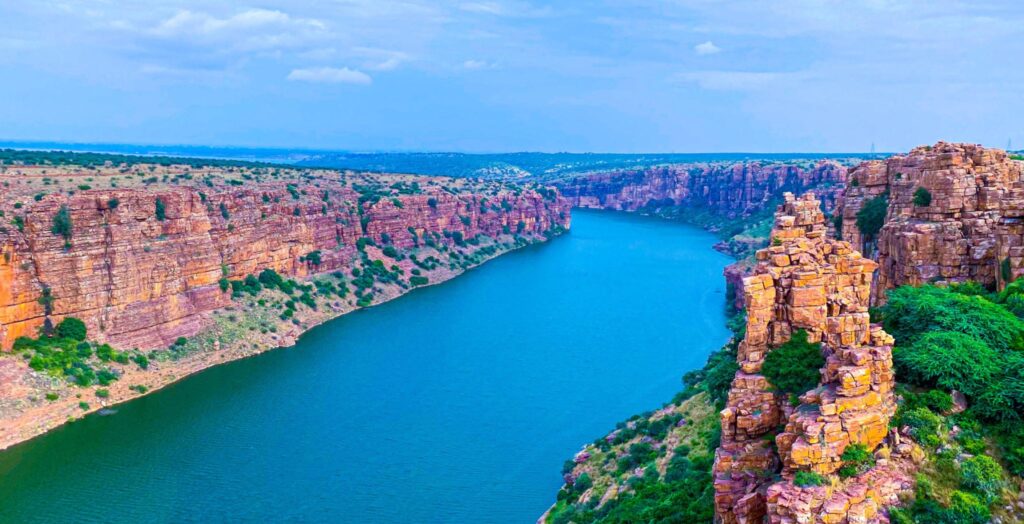Welcome! UNESCO World Heritage Sites in Andhra Pradesh designate specific cultural and natural sites worldwide as World Heritage Sites.
Additionally, these sites hold immense importance to humanity for their outstanding universal value.
Furthermore, Andhra Pradesh, renowned as one of the leading rice-growing states in India, boasts significant agricultural prowess thanks to its prominent rivers like the Godavari, Krishna, and Penneru.
In addition, this vibrant state is home to remarkable world heritage sites that reflect its rich cultural and historical legacy. Discover the world heritage sites in Andhra Pradesh and delve into the state’s unparalleled heritage.
Gandikota
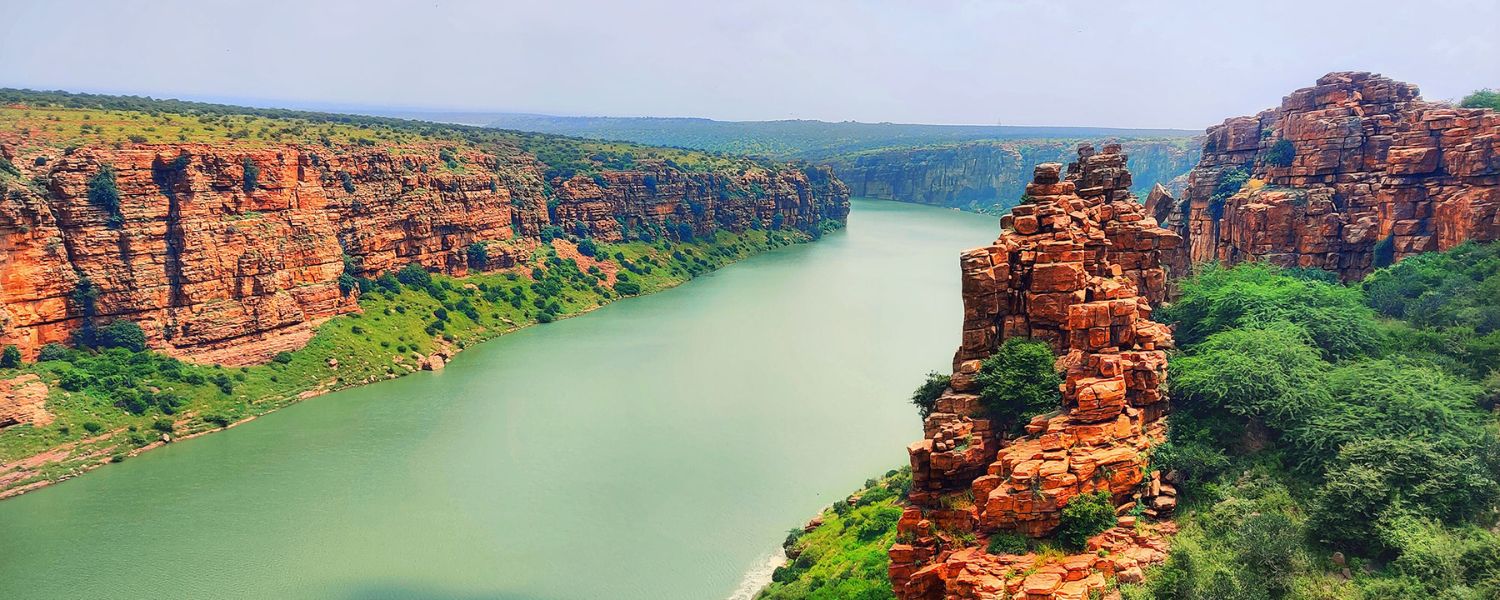
However, it is situated at a distance of 15 km from Jammalamadugu, 94 km from Kadapa, 155 km from Kurnool, 233 km from Tirupati, 280 km from Bangalore, 386 km from Hyderabad, and 391 km from Chennai.
Gandikota is a charming village nestled in the Kadapa district of Andhra Pradesh. Perched on the banks of the Pennar River, Gandikota is renowned as one of the most famous historical destinations in Andhra Pradesh.
Furthermore, it is an ideal weekend getaway from Hyderabad and Bangalore. Gandikota is characterized by its historical Gandikota Fort, which sprawls across the village.
The Fort’s origins date back to 1123 CE when Kapa Raja of nearby Bommanapalle village, a subordinate of the Western Chalukyan king Ahavamalla Someswara I, first identified the area and constructed a sand fort.
The Fort saw significant development during the reign of the Kamma kings, who ruled for over 200 years. In 1650 CE, the Fort came under the control of the Qutub Shahis of Golconda.
Interestingly, the medieval Fort derives its name from the Telugu word “gandi,” meaning gorge, which refers to the nearby canyon. Moreover, it is believed that the renowned Telugu poet Vemana resided in the Gandikota area for a brief period.
Lepakshi

Lepakshi, a quaint village, lies 125 km from Anantapur, 124 km from Bangalore City Junction, 225 km from Tirupati, 478 km from Hyderabad, and 569 km from Vijayawada. It is situated 14 km east of Hindupur in the Anantapur district of Andhra Pradesh.
This village stands out as a significant heritage site in Andhra Pradesh, showcasing the grandeur of the Vijayanagara Dynasty. Furthermore, it is a popular tourist destination and a favored one-day trip from Bangalore.
In the 16th century, during the reign of Vijayanagara king Aliya Rama Raya, Lepakshi founded itself, steeped in history and legend.
Virupanna, the royal treasurer, faced accusations of misappropriating state funds to construct the Veerabhadra temple without the king’s consent. In a dramatic turn of events, he blinded himself to escape the king’s wrath. Blinded eye.
Amaravati
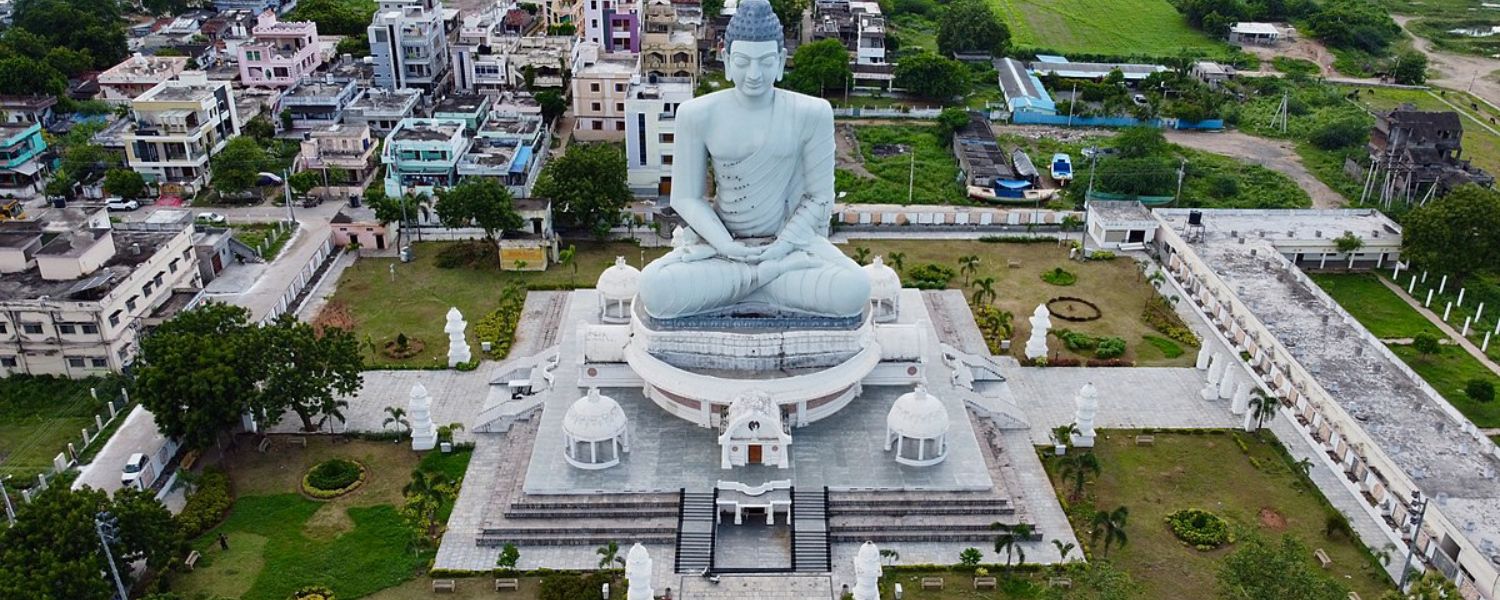
Amaravati, 33 km from Guntur and 38 km from Vijayawada, is a historic town on the southern bank of the Krishna River in Andhra Pradesh.
Serving as the new Andhra Pradesh capital, it is pilgrimage site for Hindus and Buddhists. The town derives its name from the Amareshwara or Amaravati temple dedicated to Lord Shiva.
Mentioned in ancient Indian epics as Dhanyakataka and Andhranagari, Amaravati was the capital of the Satavahanas from the 2nd century BCE to the 3rd century CE.
Subsequently, numerous dynasties ruled over it, including the Andhra Ikshvakus, Pallavas, Cholas, Kakatiyas, Delhi Sultanate, Musunuri Nayaks, Bahmani Sultanate, Vijayanagara Empire, Sultanate of Golconda, and Mughal Empire.
Moreover, Amaravati was ceded to France in 1750 but captured by the British in 1759, with brief control by Hyder Ali before reverting to British rule in the 1780s.
Finally, following the Andhra Pradesh language bifurcation from Telangana in 2014, Amaravati became the de facto state capital.
Kurnool
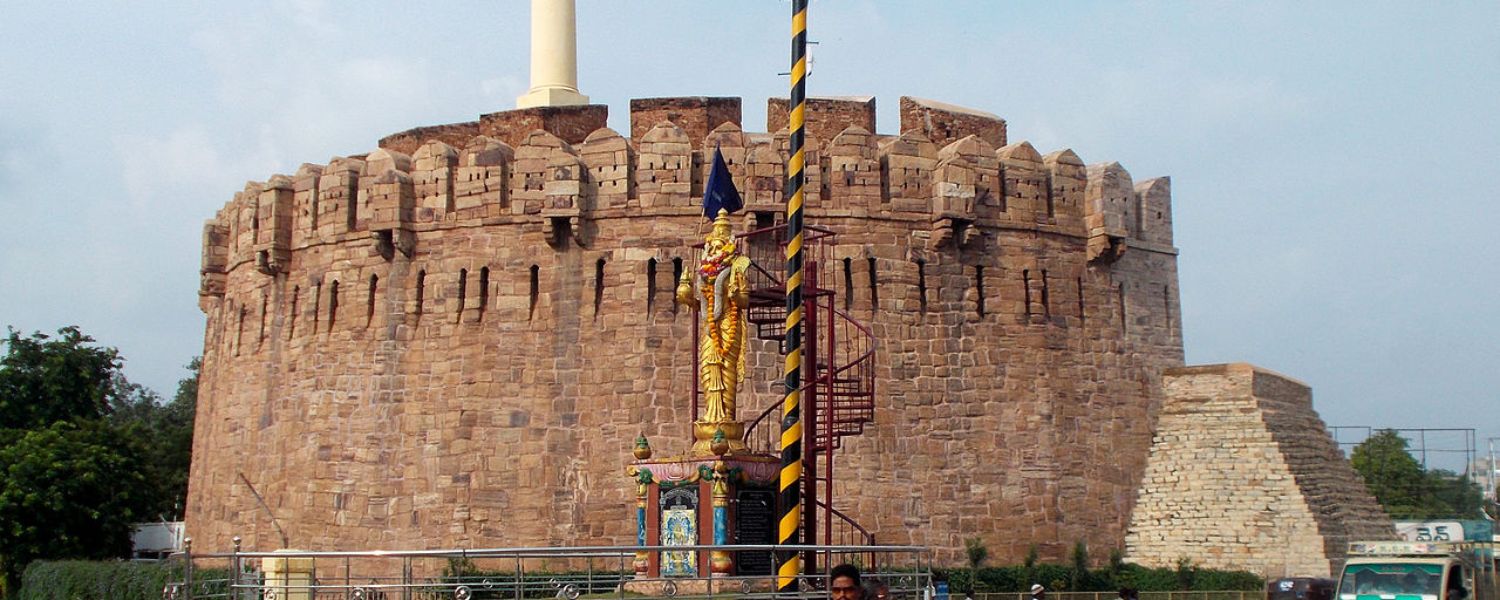
Kurnool, 215 km from Hyderabad and 360 km from Bangalore, is a significant town in Andhra Pradesh. However, it was the first capital of united Andhra Pradesh from October 1953 to October 1956.
Situated on the banks of the Tungabhadra River, Kurnool is the gateway to the Rayalaseema region. Historically known as Kandenavolu, it served as a transit and greasing spot for carts.
The Cholas and Kakatiya kings ruled Kurnool in the 12th and 13th centuries, followed by the Vijayanagar Kings in the 16th century, who built the Kurnool Fort.
The town came under Mughal control in 1686 and was later ruled by Nawabs until the British took over in 1839.
Notable attractions include the ruins of the Vijayanagar fort, Konda Reddy Buruju, and the tomb of Abdul Wahab.
Konda Reddy Buruju / Konda Reddy Fort
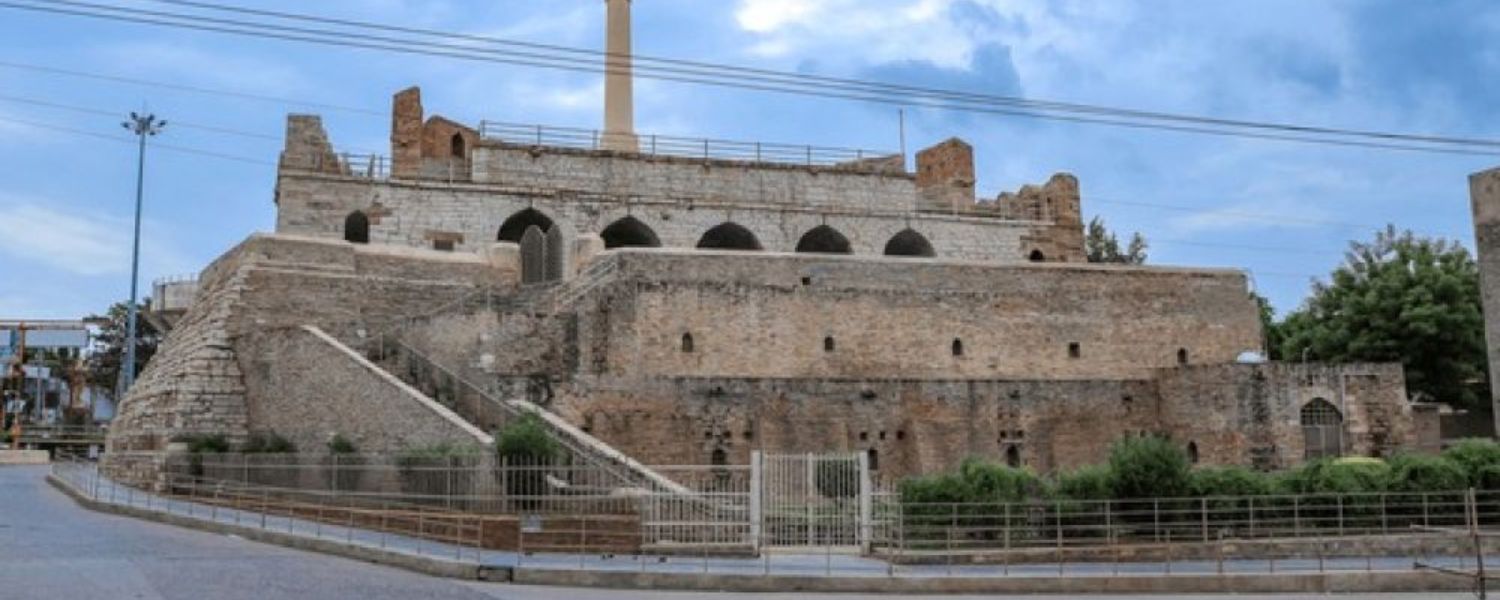
At 2 km from Kurnool Railway Station and 24 km from Alampur, Konda Reddy Buruju, also known as Konda Reddy Fort, stands as an imposing structure in the heart of Kurnool City.
The historic Fort dates back to the 12th century and initially builders constructed it as a halt before crossing the Tungabhadra River in Kurnool.
Moreover, Kurnool was occupied by the Vijayanagar ruler Devaraya II, and Achyutaraya, who succeeded Krishnadevaraya, constructed the initial Fort between 1530 and 1542.
The Fort features various gateways and bastions, built by Gopal Raja, the grandson of Rama Raja of the Talikota Vijayanagara kings, in the 17th century.
Furthermore, the Fort has three levels and served as a watchtower during the 17th and 18th centuries. Visitors can explore the first and second floors to glimpse history, as the ground level is closed to them.
The first level includes several enclosures with a large entrance, and the second level houses a large observation tower.
Gooty Fort
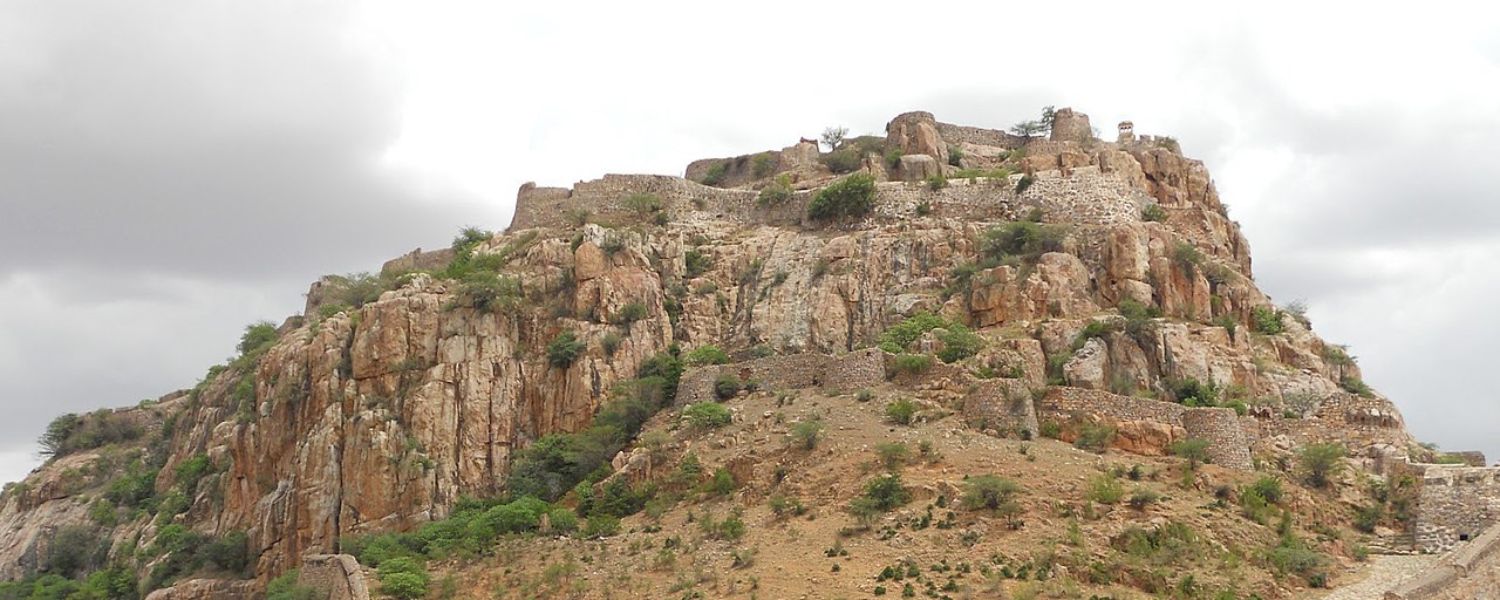
Located 5 km from Gooty Railway Station and 52 km from Anantapur, Gooty Fort, or Gutti Fort, is a historic hill fort in the Anantapur district of Andhra Pradesh.
The Fort, 97 km from Kurnool and 311 km from Hyderabad, witnessed numerous power struggles and wars during the medieval period. Sri Krishnadevaraya of the Vijayanagara Empire enhanced the fortifications and added several sections.
Additionally, the Bahmani Sultans occupied the Fort for a time. After the Vijayanagara Empire’s fall, it came under the rule of the Qutb Shahis of Golconda and later the Hyderabad Nizams.
In 1773, Hyder Ali took control, followed by Tipu Sultan. Subsequently, the Fort fell into the hands of the Hyderabad Nizams. Maratha forces under Morari Rao briefly occupied it.
The British received the Fort as part of the Ceded region under the Madras Presidency. Previously known as Gowthampuri, the Fort was later renamed Gooty.
The earliest inscriptions on the Fort’s walls date back to the 7th century, referring to it as Gadha, meaning Fort, and Bukkaraya calls it the King of Forts.
Borra Caves

At 36 km from Araku and 88 km from Vizag, Borra Caves, one of the deepest in India, are situated in the Anantagiri hills of Andhra Pradesh.
However, in 1807 by William King George of the Geological Survey of India, these one-million-year-old limestone caves are a must-visit in Araku Valley as part of Vizag packages.
According to local legend, a cowherd stumbled upon these caves while searching for his lost cow, discovering a Linga associated with Lord Shiva.
Consequently, a small Shiva temple was erected outside the cave. Furthermore, the caves are adorned with fascinating stalagmite and stalactite formations created by the Gosthani River’s flow through the limestone area.
The humic acid in the water dissolved the limestone, making today’s unique formations.
Chintala Venkataramana Swamy Temple – Tadipatri
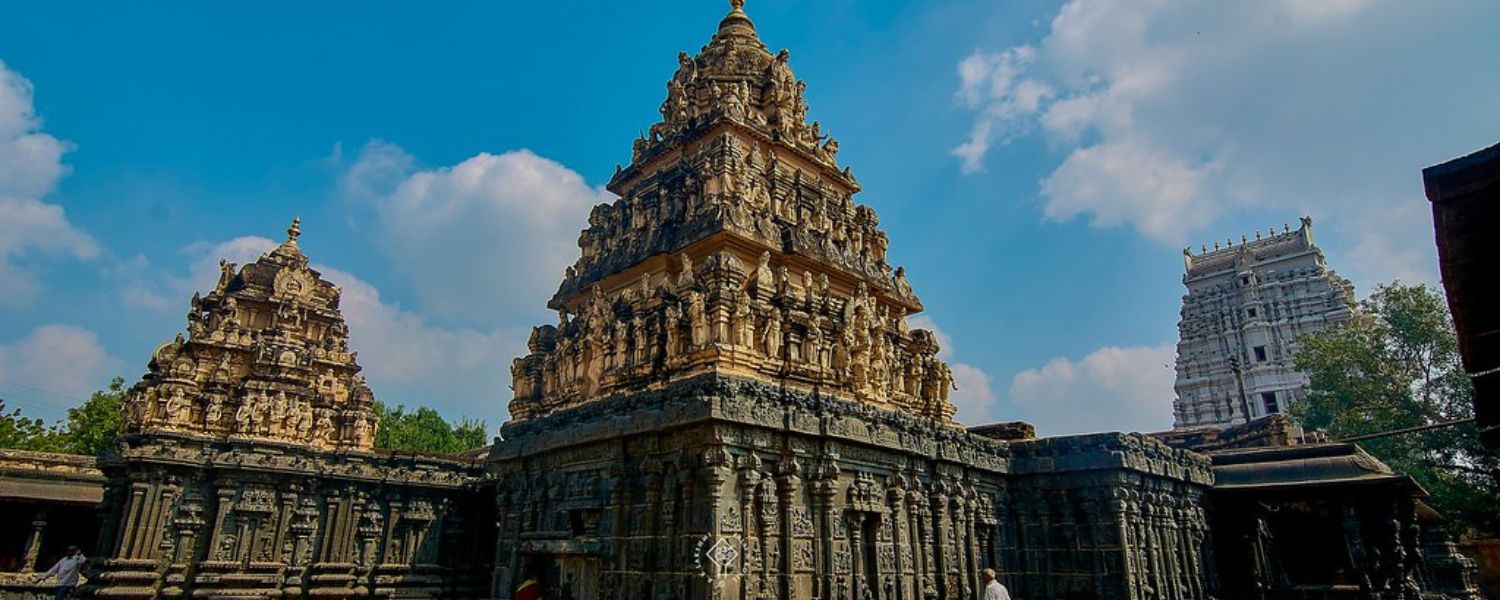
Located 1 km from Bugga Ramalingeswara Swamy Temple and 3 km from Tadipatri Railway Station, the Chintala Venkataramana Swamy Temple is renowned in Tadipatri, Andhra Pradesh.
Built-in the 16th century by Timma Naidu, son of Ramalinga Naidu of the Vijayanagar Kingdom, this temple is dedicated to God Vishnu in the form of Venkataramana Swamy.
The temple’s architecture closely resembles the Vittala Temple in Hampi, though its stone chariot is more miniature.
Spanning 5 acres, the temple follows the Silpa Sastras, with intricate carvings depicting scenes from the Ramayana, Mahabharata, and Bhagavatha adorning various parts of the temple.
Bugga Ramalingeswara Swamy Temple – Tadipatri
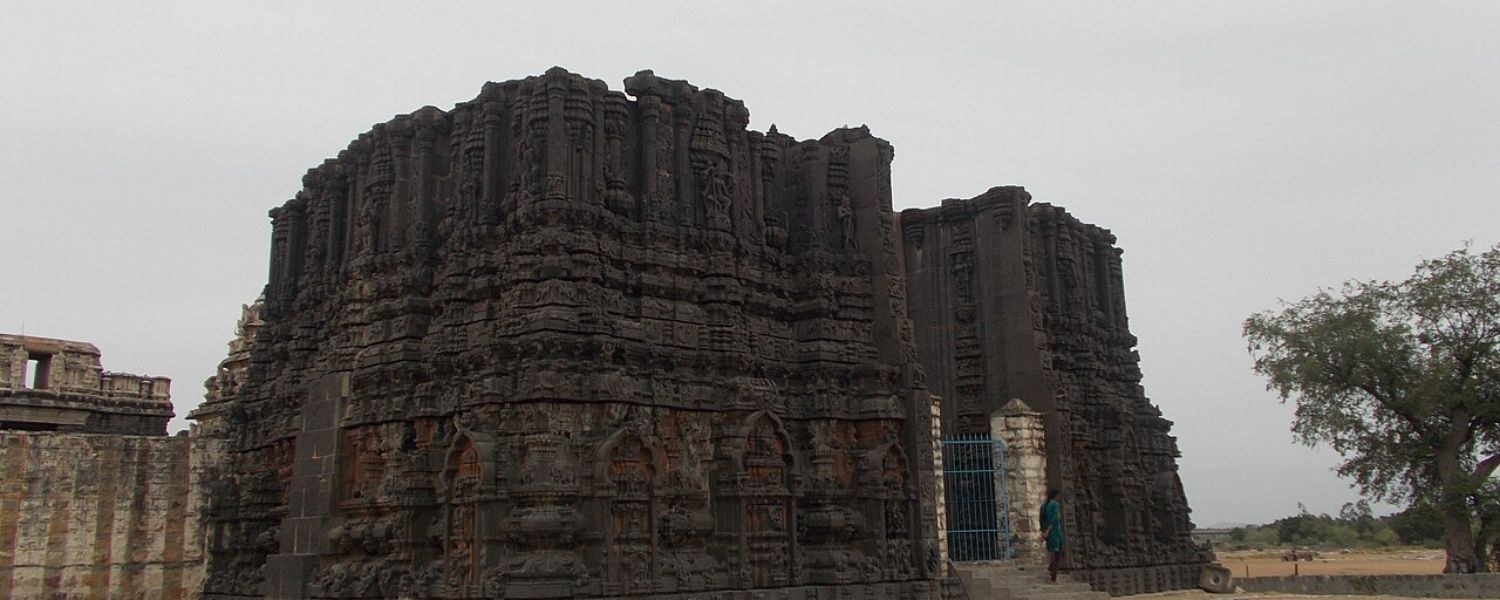
Situated on the banks of the Penna River, the Bugga Ramalingeswara Swamy Temple is a testament to the architectural brilliance of ancient times.
Ramalinga Nayudu, a noble under the Vijayanagara Kings, built this temple dedicated to God Shiva in the form of Ramalingeswara Swamy in the 16th century.
The temple gets its name from a perennial underground stream (‘bugga’ in Telugu) that continuously flows into the sanctum sanctorum, where the lingam is enshrined.
Legends speak of sage Parasurama’s meditation spot being the site of this temple. The architecture is a captivating blend of Chalukyan, Chola, and Vijayanagar styles, with intricate carvings adorning the walls.
The Vijayanagara kings built noteworthy elaborate gopurams, particularly the north gopuram, which features exquisite sculptures depicting scenes from the Shiva Purana.
Undavalli Caves
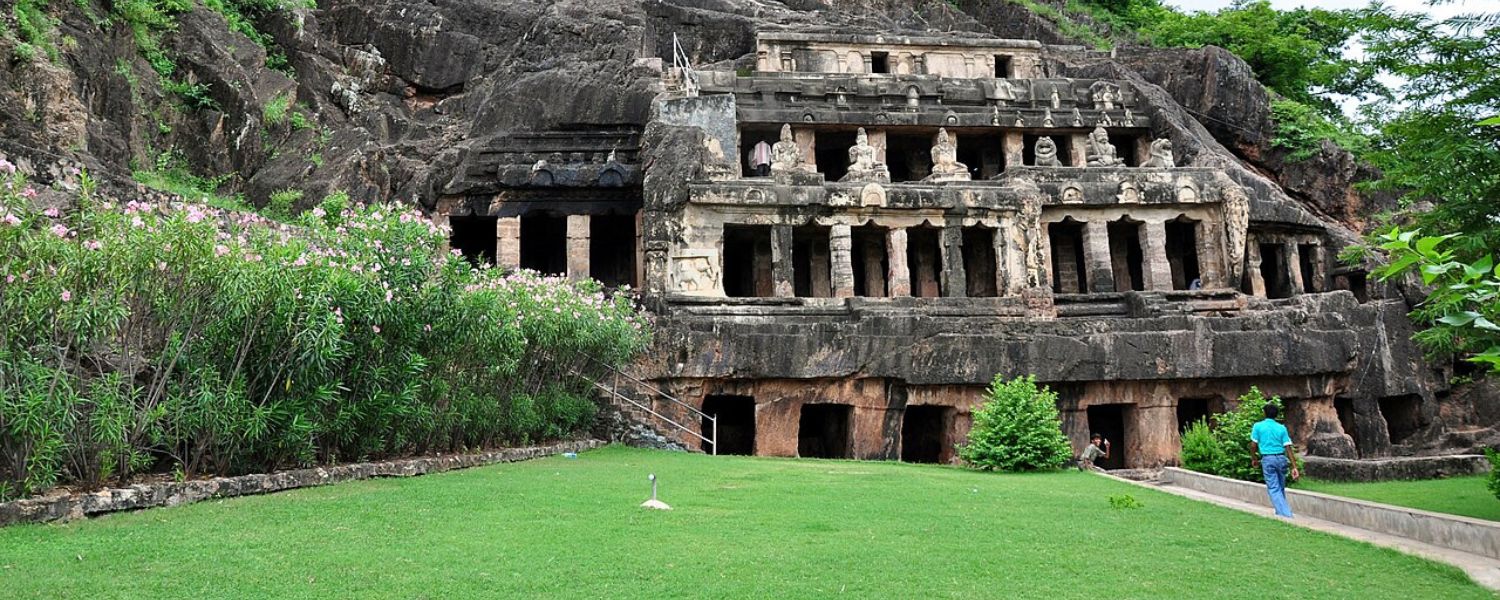
Located in the Undavalli Village of the Guntur district, the Undavalli Caves are a remarkable example of ancient rock-cut architecture.
Believed to have been carved between the 4th and 5th centuries by the Gupta dynasty, these caves overlook the Krishna River.
The main cave, with its four stories, houses a colossal reclining statue of Lord Vishnu sculpted from a single block of granite.
Dedicated to the Trimurti, Brahma, Vishnu, and Shiva, these caves initially served as Buddhist monasteries, evident from the vihara-style cells on the first floor.
Intricately adorned facades on the upper floors feature sculptures of lions, elephants, and other mythical creatures.
These caves, linked to the Vishnukundina kings, provide a fascinating insight into historical Indian architecture and religious practices.
Chandragiri
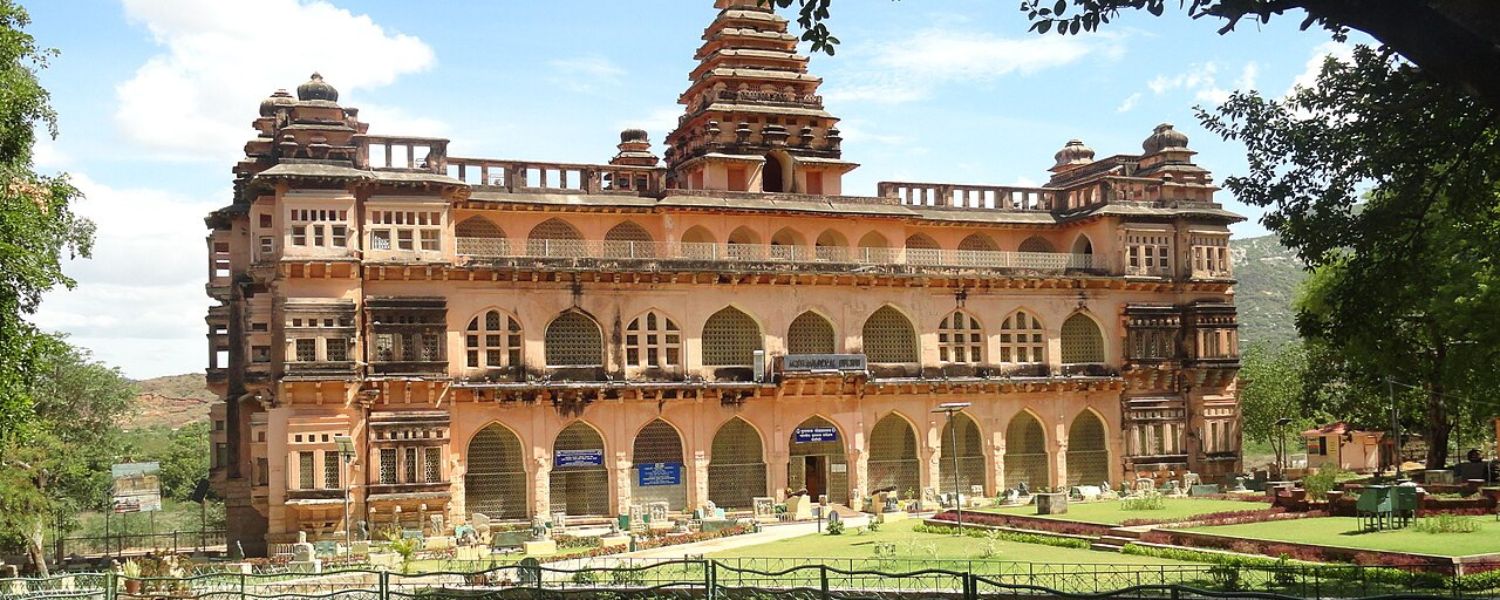
Chandragiri, located just 15 km away from Tirupati, holds a significant destination in the historical narrative of heritage sites in Andhra Pradesh.
Once the seat of the Yadavaraya Kings from the 11th to the 13th centuries, this ancient town later became the fourth capital of the Vijayanagar Dynasty.
Its proximity to Tirupati makes it an ideal destination for those seeking a mixture of heritage sites in Andhra Pradesh and spirituality. The town is renowned for its 11th-century Fort, a testament to its storied past.
Initially under the rule of the Yadavaraya Dynasty, Chandragiri gained prominence during the reign of Saluva Narasimha Rayalu.
It became a pivotal stronghold for the Vijayanagar Empire, especially during the conflict with the Golconda Sultanate.
Eventually, Chandragiri fell under the control of the British, marking the end of an era.
Today, toutirsts can explore the remnants of this glorious history through the Fort’s architectural marvels and immerse themselves in the tales of empires past.
Penukonda Fort
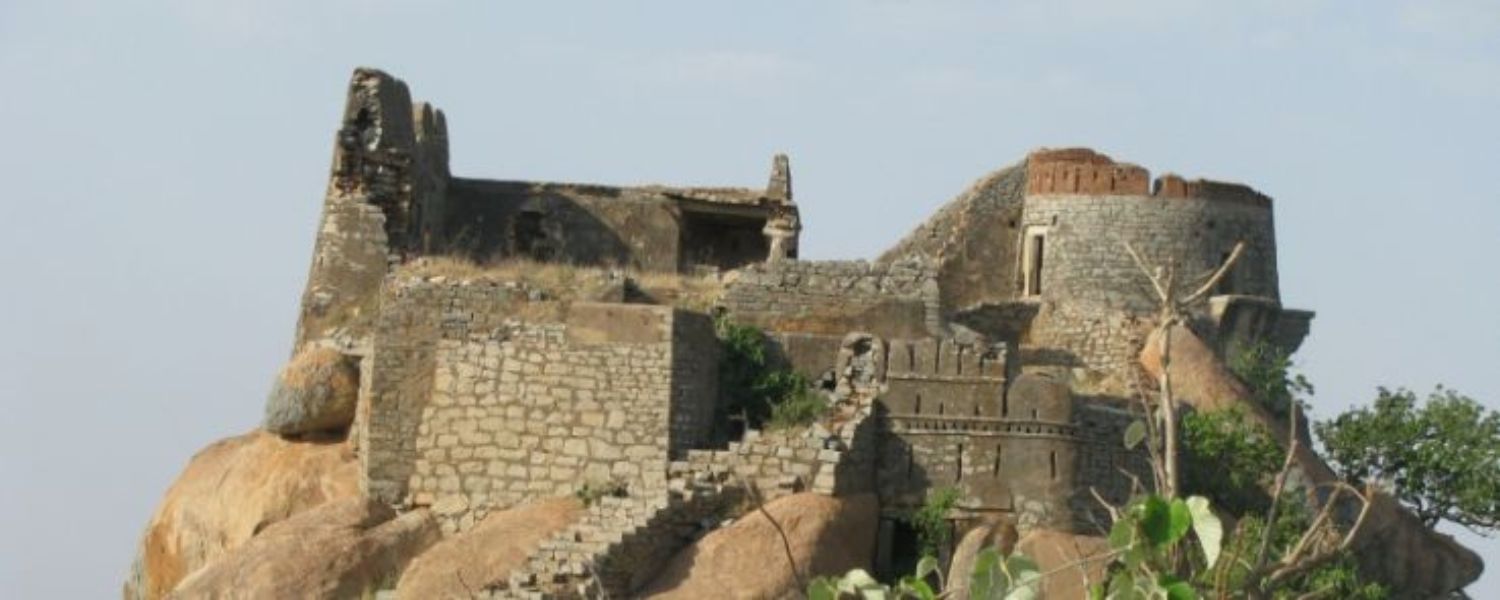
Penukonda Fort stands as a majestic relic of medieval times, offering a glimpse into the heritage sites in Andhra Pradesh. Situated just 3 km from Penukonda Railway Station, this Fort once served as the second capital of the Vijayanagar Kingdom.
Initially known as Ghanagiri or Ghanadri, it played a crucial role in the kingdom’s defense strategy. Constructed during the reign of King Bukka-I’s son, Virupanna, the Fort boasts impressive architectural features blending Hindu and Muslim styles.
Over the centuries, it witnessed the ebb and flow of empires, from the Vijayanagara to the Sultanate of Golconda and briefly under the Mysore Kingdom.
Today, Penukonda Fort is a testament to its builders’ resilience and the enduring spirit of heritage sites in Andhra Pradesh historical legacy.
Kondapalli Fort
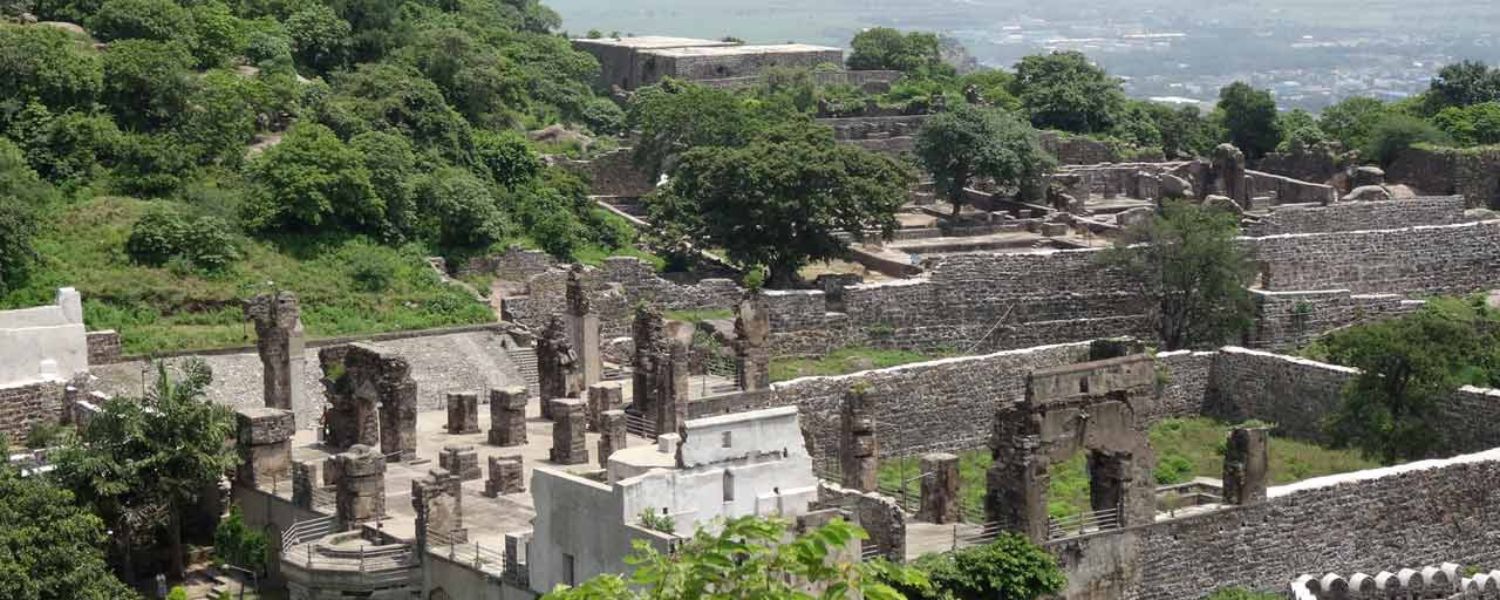
Nestled 24 km from Vijayawada Railway Station, the majestic Kondapalli Fort, also known as Kondapalli Kota, is a testament to the region’s rich history.
Erected in the 14th century under the patronage of the Reddy King of Kondaveedu, Prolaya Vema Reddy, this sprawling fortress spans across 18 sq. km.
Initially serving as a recreational palace, the Fort eventually became a bustling hub of commerce. Over time, it exchanged hands, from the Gajapati rulers of Orissa to the Vijayanagara Empire under the reign of Sri Krishna Devaraya.
Later, it fell under the control of the Qutubshahi Kings in the 16th century. Even during the colonial era, the British utilized the Fort for military training.
Perched atop a hill, the Fort boasts a three-storied rock tower safeguarded by multiple entry points, including the formidable Dargah Darwaza and Golconda Darwaza.
The Tanisha Mahal, nestled amidst the hills, is a significant attraction, alongside other ruins like the Gajasala, Queen’s palace, and Virupaksha Temple.
Rayadurgam Fort
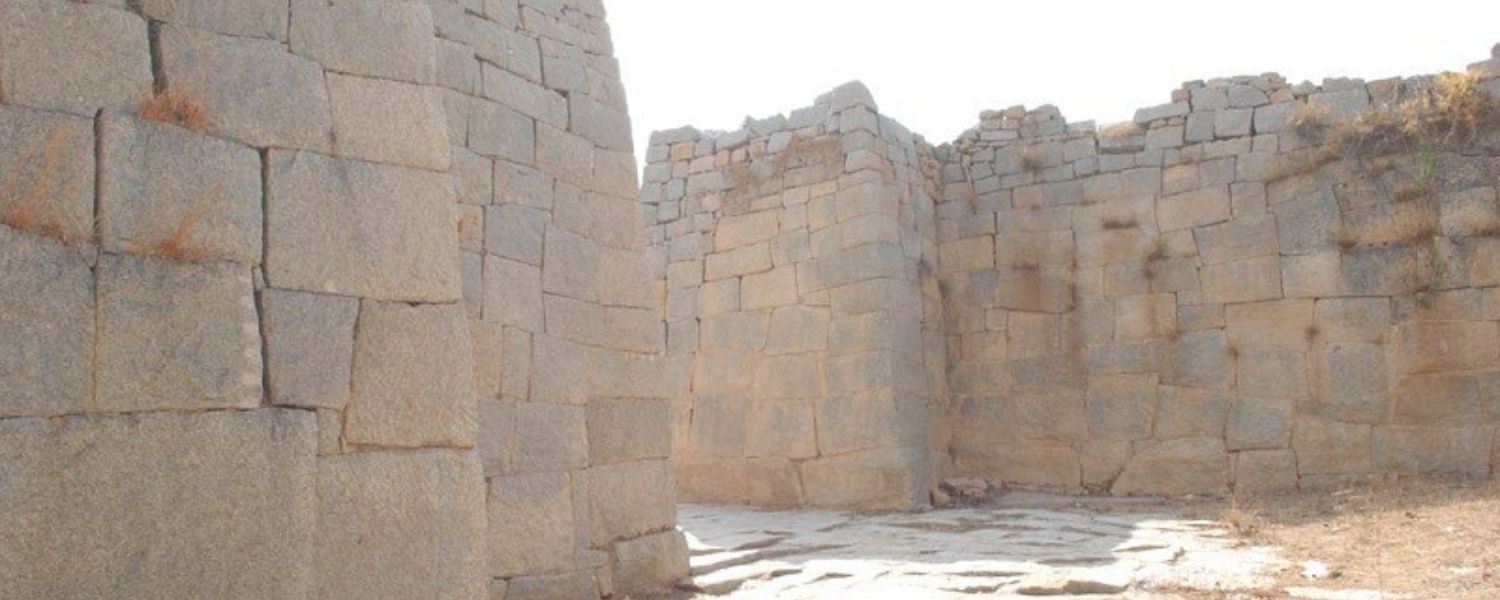
Merely 2 km from Rayadurgam Bus Stand, Rayadurgam Fort stands tall as one of heritage sites in Andhra Pradesh oldest fortifications.
Constructed at an impressive elevation of 2727 feet, Junga Nayaka, a loyal chieftain of the Vijayanagar Kings, commissioned this medieval stronghold.
It witnessed significant battles throughout history, including the Battle of Talikota and confrontations with Tipu Sultan.
Despite these conflicts, the Fort persevered, thanks to the strategic fortifications laid by Venkatapathi Nayaka, Junga Nayaka’s successor.
Its layered defenses made access challenging, securing its prominence during the Vijayanagara Empire’s reign. Today, the Fort remains a popular visitors attraction, drawing visitors with its rich historical narrative and well-preserved structures.
Belum Caves
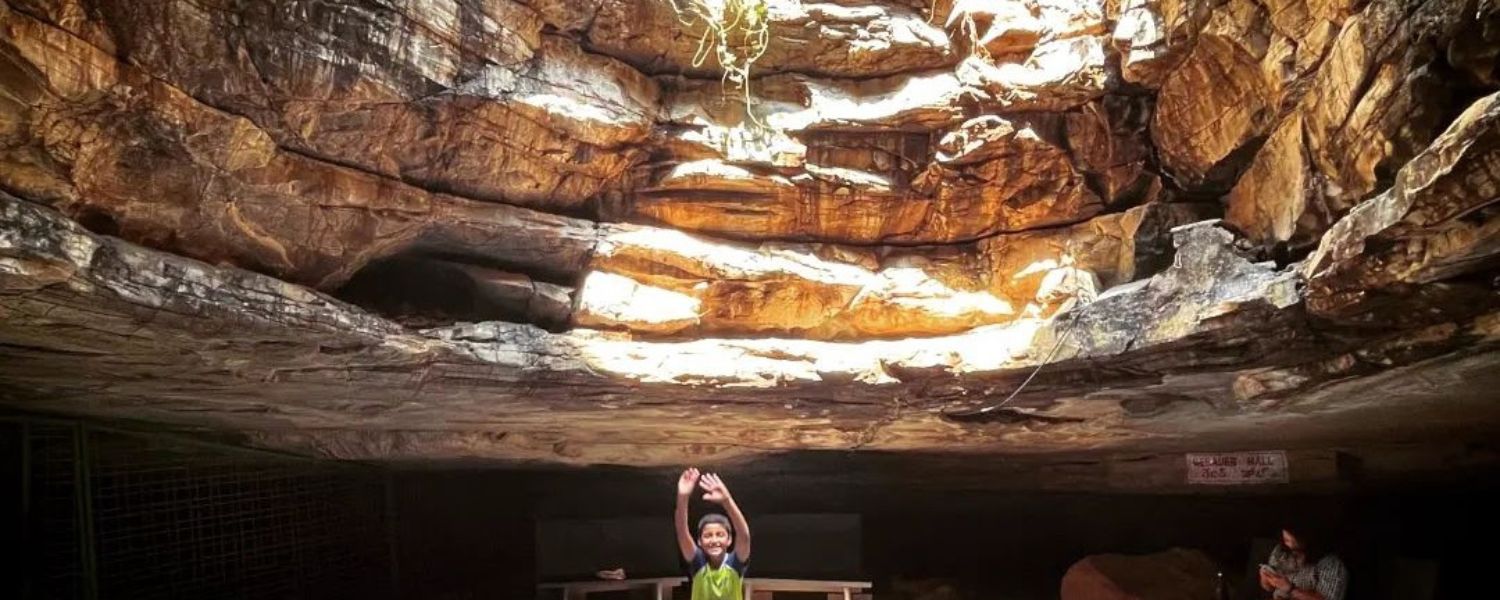
Between Nandyal and Tadipatri in Kurnool district, Belum Caves are a testament to nature’s artistry, beckoning adventurers and history enthusiasts alike.
At a sprawling 3229 meters, they rank as India’s second-largest caves and boast the title of the longest in the country.
However, carved over millions of years by the ceaseless flow of the Chitravati River, these caverns feature an intricate network of passages, spacious chambers, and even freshwater galleries.
Visitors encounter a mesmerizing subterranean world at 120 feet beneath the entrance level. In ancient times, Buddhist monks sought solace within these stone confines, turning them into meditation halls.
Today, the caves are accessible thanks to pathways and bridges developed by AP Tourism, with a nearby resort offering convenient accommodations for explorers. You can also explore the Adventure Resorts in Bangalore.
Hemavathi
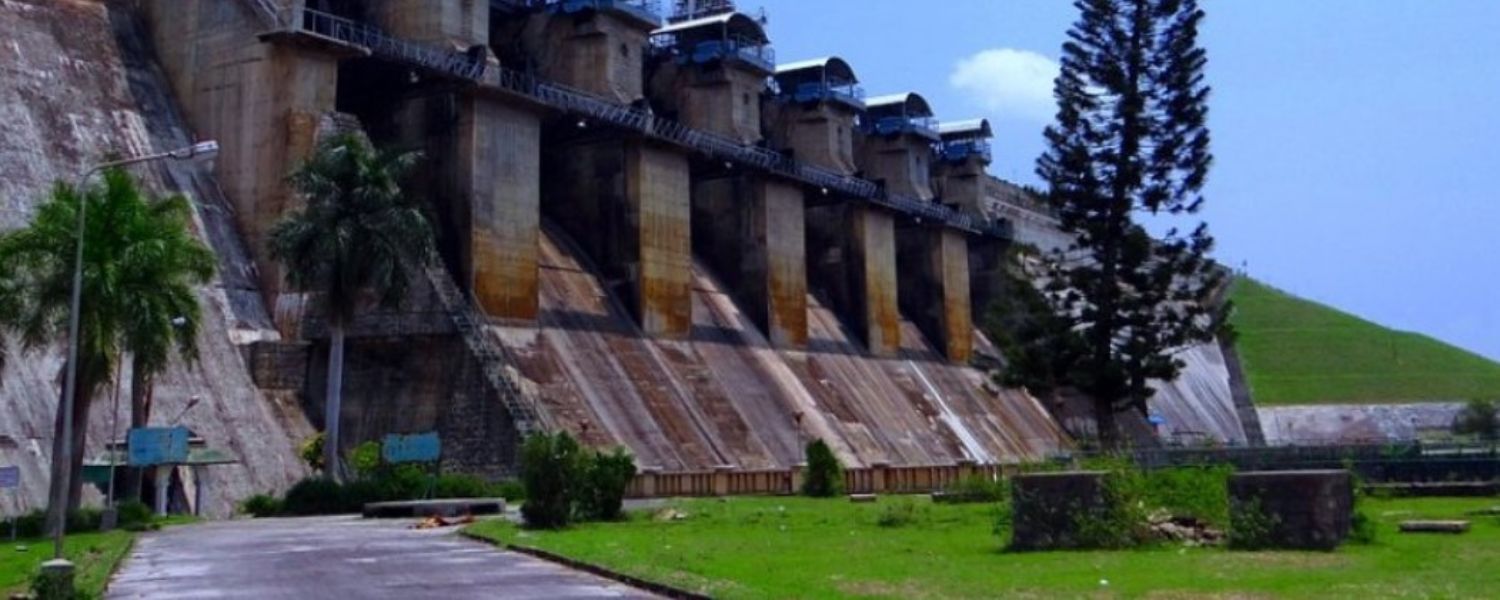
Entering the historic town of Hemavathi in Anantapur district transports travelers back to the golden era of the Pallavas.
Once the capital of this illustrious dynasty, Hemavathi flourished between the 8th and 10th centuries AD, leaving behind a legacy of architectural marvels.
Amidst the ruins of a grand fort lie the remnants of Pallava temples, each bearing testimony to the empire’s cultural richness.
Notable among these are the Siddeswara, Doddeshwara, Virupaksheswara, and Malleswara Temples, spread across a vast 15-acre complex.
The Doddeswara Swamy Temple, with its polished stone idols and intricate artwork, stands as a pinnacle of Pallava and Chola architecture.
Adorned with sculptures depicting scenes from epics like the Ramayana and Mahabharata, these temples serve as living chronicles of a bygone era, drawing visitors into a realm of timeless beauty and historical significance.
Adoni Fort
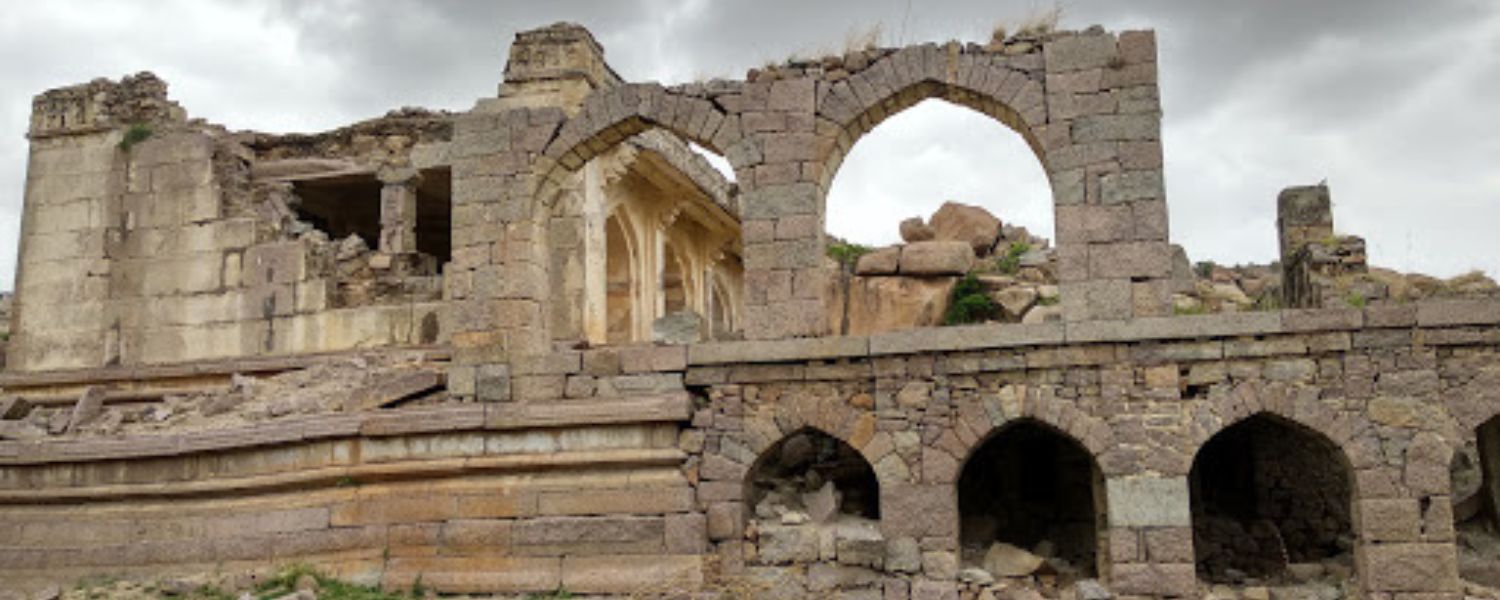
Adoni Fort, a remarkable historical gem, sits proudly 4 km away from Adoni Railway Station and is a testament to the grandeur of the 15th century.
Covering a vast expanse of land, this Fort stretches over 50 km, making it one of the largest forts in India.
Initially serving as a military stronghold for the Vijayanagara Empire, it later saw the reign of various rulers, including the Bijapur sultans, the Mughals, and the Hyderabad Nizams.
Siddi Masud, one of the notable governors of Adoni, left his mark on the Fort by adding structures like the Jamia Masjid and several townships.
Even Tipu Sultan briefly claimed this territory before it fell under British rule. Adoni Fort not only offers a glimpse into the region’s rich history but also provides an excellent opportunity for trekking amidst its rocky terrain and ancient ruins.
Thotlakonda
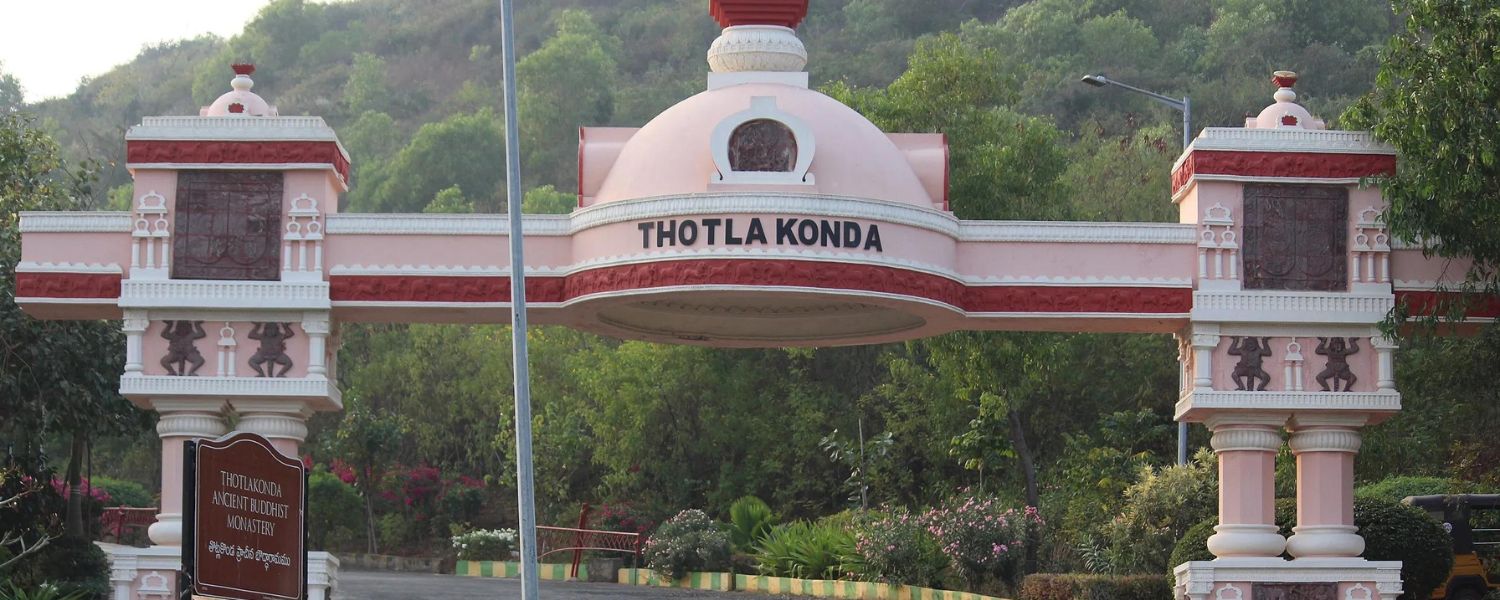
On the other hand, nestled 22 km from Vizag Railway Station lies the Thotlakonda Buddhist Complex, also known as ‘the Hill of Eagles.’
This site, situated atop a hill in Chepala Uppadu village, boasts a plethora of stupas, chaityas, viharas, and other religious and secular structures.
Dating back to the Hinayana school, these excavations between 1982 and 1992 have unearthed a treasure trove of artifacts, including pottery, coins, inscriptions, and sculptural remains.
Thotlakonda stands as a silent witness to the rich Buddhist heritage of the region, offering visitors a chance to delve into its ancient past and marvel at its architectural splendor.
Bavikonda
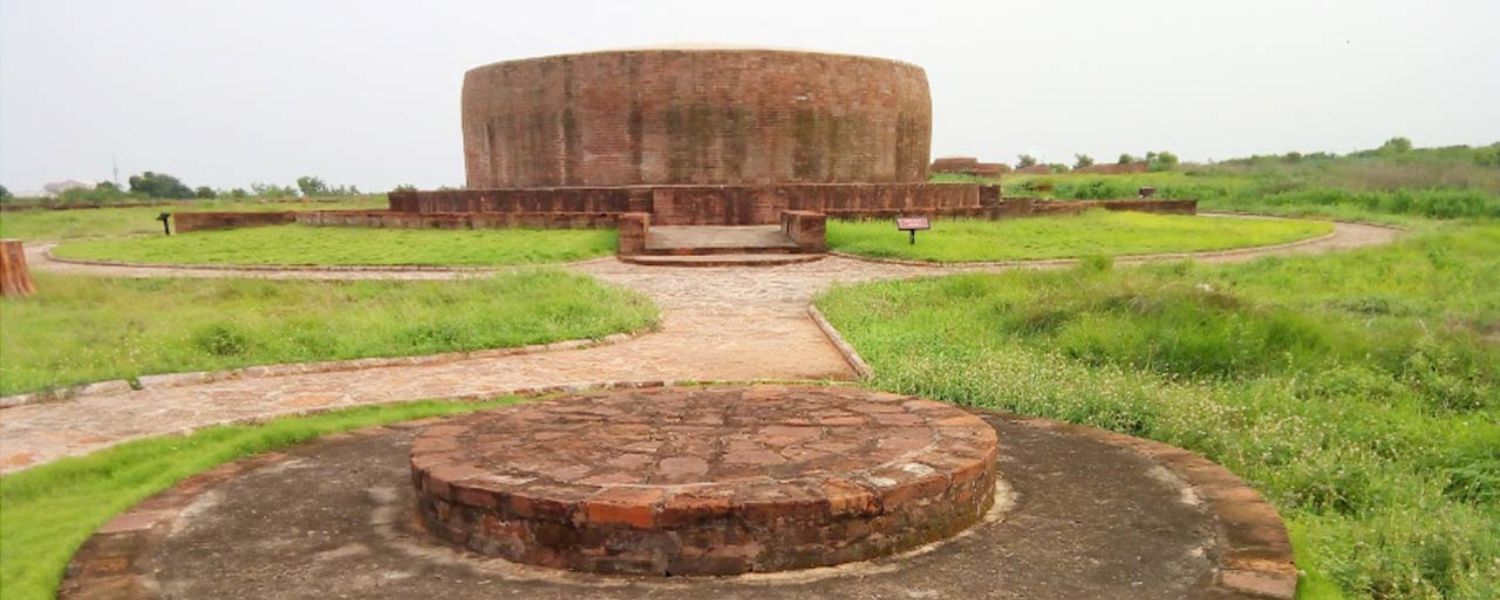
Venture 20 kilometers from Vizag Railway Station, and you’ll find yourself at Bavikonda, a historical Buddhist site steeped in antiquity.
Perched near Kapula Uppadu village along the Bheemili beach road, this site derives its name from the wells that once dotted its hills, serving as vital water sources.
Delve deeper into its soil, and you’ll unearth additionally, dating back to the 3rd century BC and 2nd century AD.
Among the relics discovered are Roman and Satavahana coins, pottery, and an array of artifacts that hint at a thriving Buddhist establishment.
Mahachaityas, stupas, viharas, and more stand testament to a bygone era, offering glimpses into ancient rituals and daily life.
Conclusion
In conclusion, the world heritage sites in Andhra Pradesh stand as remarkable testaments to the state’s rich cultural and historical legacy of the formation of Andhra Pradesh in 1953.
From the majestic forts of Gandikota, Gooty, and Adoni to the ancient rock-cut wonders of Borra Caves and Undavalli Caves, each site offers a unique glimpse into the region’s storied past.
Additionally, the architectural marvels of temples like Lepakshi, Amaravati, and Tadipatri’s Chintala Venkataramana Swamy Temple showcase the intricate craftsmanship of bygone eras.
Moreover, the Buddhist complexes of Thotlakonda and Bavikonda add to the diverse tapestry of heritage experiences in Andhra Pradesh.
Exploring these sites not only enriches one’s understanding of history but also fosters a profound appreciation for the heritage sites in Andhra Pradesh.
FAQ
Q: What is Andhra Pradesh’s famous heritage?
A: Chandragiri, along with Tirupati, is one of the ideal Chennai weekend getaways and a significant historical site in Andhra Pradesh. Moreover, it is one of the prime tourist places in Tirupati town. However, Chandragiri near Tirupati boasts the Ancient Fort, constructed in the 11th century, famous for its historical significance.
Q: Which UNESCO temple is in Andhra Pradesh?
A: The Lepakshi Temple, also known as the Veerabhadra Temple, is located in the town of Lepakshi in the Anantapur district. The Vijayanagara Empire built this 16th-century temple dedicated to Veerabhadra, a fierce form of Lord Shiva.
Q: Who is the legend of Andhra Pradesh?
A: Tanguturi Prakasam Pantulu, known as Andhra Kesar (lion of Andhra Pradesh), and Potti Sreeramulu, the father of Andhra Pradesh, known as Amarajeevi (immortal being), are legendary figures.
Q: Which is the first temple in Andhra Pradesh?
A: Near the Tirupati airport, the Gudimallam Parasurameswara Temple stands as the oldest known Shiva temple in Andhra Pradesh.
